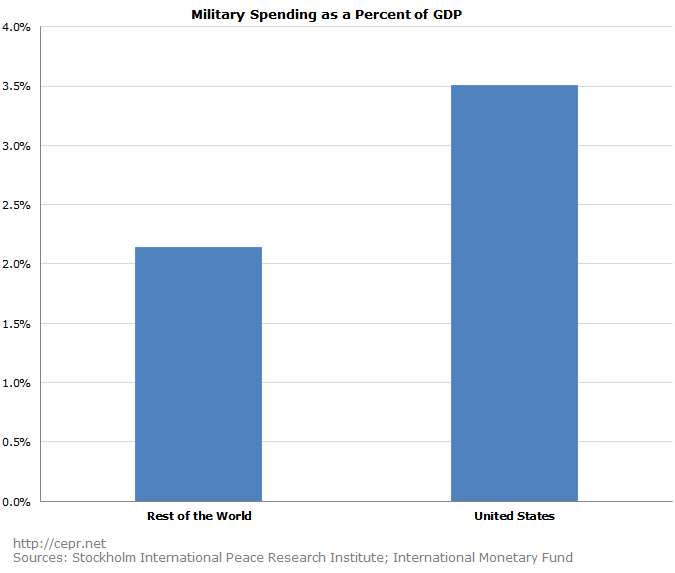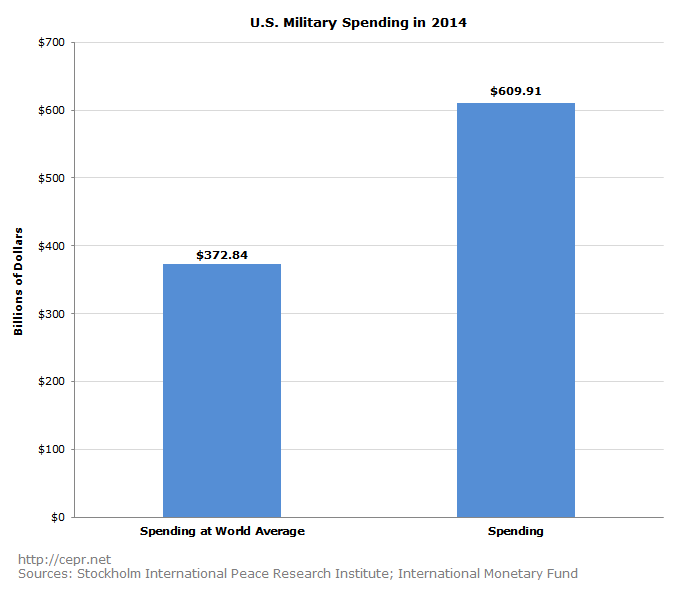October 06, 2015
On August 2, 2011, Congress passed the Budget Control Act, which aimed to reduce federal spending through 2021. In the months preceding passage of the Act, members of Congress debated what percentage of spending cuts should come from the military. Implicit in this debate was a subtler question: how do we determine what level of military spending is appropriate?
In determining how to best answer this question, the U.S. may want to learn from the answers provided by other countries. We can compare military spending in the U.S. with military spending throughout the rest of the world to determine if our military spending is abnormally high, abnormally low, or about what we’d expect given our national income.
Data on military spending for 142 countries was obtained through the Stockholm International Peace Research Institute (SIPRI). SIPRI’s data are available on the basis of exchange rate dollars; using data from the International Monetary Fund (IMF), it was converted to Purchasing Power Parity-adjusted (PPP-adjusted) dollars.
Data on each country’s PPP-adjusted GDP from the IMF is then used. The Fund has estimates for all SIPRI countries except North Korea. Combining the two datasets leaves 141 countries, which together account for 97 percent of world GDP.
The 140 countries other than the U.S. spent a combined $1.9 trillion on their militaries in 2014; this amounted to 2.14 percent of their aggregate GDP ($87.3 trillion). Military spending was much higher in U.S. at 3.50 percent of GDP, as can be seen in Figure 1 below.

U.S. military spending totaled $610 billion in 2014. Had the U.S. spent 2.14 percent of GDP on the military—in line with the average from the rest of the world—military spending would’ve been $373 billion. This can be seen in Figure 2 below. Cutting military spending to this level would’ve amounted to over $237 billion in savings for the federal government.

We might wonder if the U.S. should be expected to spend more on its military because of its high level of GDP per capita. If the governments of poor countries spend much of their income fighting poverty and alleviating extreme financial hardship, military spending as a percentage of GDP could conceivably go up as incomes increase. However, it appears that the opposite is actually true: in 2014, military spending amongst the other six G-7 countries (Canada, France, Germany, Italy, Japan, and the United Kingdom) was 1.4 percent of GDP. If the U.S. spent a similar portion of GDP on its military, last year’s military budget would’ve been just $248 billion.
In terms of spending tradeoffs, it is worth noting that the extra $237 billion spent on the military is greater than the combined costs of SNAP, unemployment benefits, all federal tax credits, and the annual gap between Social Security Disability Insurance spending and revenues.






